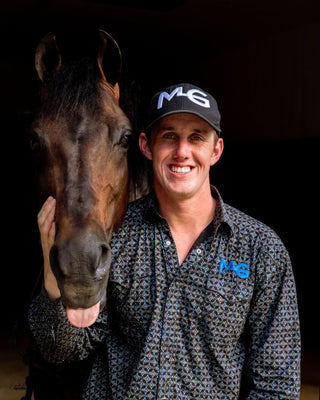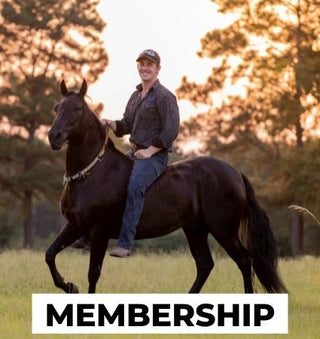Watch the Video Here or continue reading below!
When working with foals, safety should always be a top priority. Foals, though small and seemingly manageable, can pose significant risks if not handled correctly. This guide will cover key safety measures to ensure both you and the foal remain safe during interactions.
Understanding the Importance of Safety
Many people overlook safety when dealing with foals or mini horses, often treating them differently than adult horses. This can lead to unruly behavior in the animals and potential injuries to handlers. The key to safe interactions is consistency—treat foals with the same respect and precautions as you would an adult horse.
Recognizing Danger Zones
-
Red Zone (Directly in Front): Avoid standing directly in front of a foal. This is a high-risk area where the foal can strike or bite.
-
Kick Zone (Behind the Girth): Be cautious when touching the foal’s flanks or moving past the girth area. This is where you’re most vulnerable to kicks, especially cow kicks.
Safe Positioning Techniques
-
Face Control: When on the left side of the foal, keep your left hand near its face to maintain control.
-
Hand Positioning: Use your right hand when working past the girth area to increase your distance from the kick zone.
-
Awareness of Movement: If the foal moves and reaches the end of its lead rope, its head will be pulled, causing its hindquarters to swing towards you. Always anticipate this movement.
Managing Tied Foals
When a foal is tied:
-
Monitor the Lead Rope: A loose lead rope indicates the foal is relaxed. However, if the foal pulls back, it can only move forward afterward, which can be sudden and forceful.
-
Avoid Pinch Points: Never get trapped between the foal and a wall or other solid structures. Always maintain an escape route.
Respect and Consistency
Treat foals, mini horses, and young horses with the same respect you would give to larger horses like drafts. The inconsistency in handling is often the reason young or small horses develop behavioral issues. By maintaining consistent respect and boundaries, you'll earn their respect in return.
Final Thoughts
Foals are strong, unpredictable, and capable of causing injury without intending harm. Their actions are not bad behavior but natural horse behavior. By following these safety guidelines, you’ll create a safe environment that fosters respect and effective training.
Want more tips on training problem horses? Join our Free Horse Help Challenge and start enjoying your horse today!









